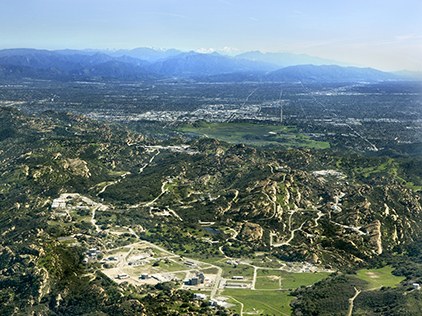Radioactive Waste 358 - Contaminated Santa Susana Field Laboratory Site Near Los Angeles Is Burning
SSFL_Aerial_2005.jpg

The Santa Susana Field Laboratory is a complex of industrial research and development facilities in the Southern California Simi Hills in Simi Valley, California. Liquid-propellant rocket engines were developed on this site for the U.S. space program from 1949 to 2006. Research on nuclear reactors was carried out here between 1953 and 1980. A U.S. research center for liquid metals was located at the site between 1966 and 1998. The site is about thirty miles from downtown Los Angeles.
Ten low-power nuclear research reactors were operated on this site through the years. Four of the reactors had accidents during their years of operation. Since the reactors were classified as experimental, there were no containment structures to trap the release of radioactive materials in case of accidents. Through the decades of use, there were significant releases of radioactive and toxic materials on the site. It is considered to be highly contaminated. In 2006, all research and development activity stopped.
Between 1957 and 1964, the Sodium Research Experiment was carried out on the site. It has the dubious distinction of being the first U.S. commercial power plant that had a core meltdown. For decades, the U.S. Department of Energy covered up this accident. Thousands of pounds of radioactive sodium coolant that leaked during the meltdown have still not been accounted for.
There have been many fires involving radioactive materials on the site. A sodium burn pit was used to dispose of sodium contaminated components. This pit became radioactive itself because of the burning of radioactive materials. Twenty two of the twenty-seven man burn crew have died of cancer. There is a cluster of rare cancers near the site which have been blamed on the contamination of the site. It has been estimated that two hundred and sixty cancer deaths can be connected to the contaminated site.
Boeing bought the site in 1996. There have been legal battles over the cleanup of the site for decades. Boeing claims that there is no threat to people or the environment from contamination at the site. They expressed an intent to remediate the landscape for use as a park but there is widespread skepticism about claims that it will be safe for public use.
In 2005, wildfires burned through the Simi hills. There was major fire damage to the facilities on the site. There were allegations that radioactive materials were carried aloft and distributed over the surrounding countryside by the wildfires.
Now the Woolsey fire in southern California is burning through the site. There has been major damage to infrastructure such as rocket test stands and buildings. Once again, there is fear that smoke from a wildfire will carry radioactive and other toxic materials aloft and distribute them far beyond the limits of the site.
The California Dept. of Toxic Substances Control (DTSC) said that its staff, “do not believe the fire has caused any releases of hazardous materials that would pose a risk to people exposed to the smoke.”
On the other hand, the public is rightfully skeptical because of the history of coverups of major accidents at the site. A woman who lives near the site and whose daughter has leukemia said, “DTSC repeatedly minimizes risk from SSFL and has broken every promise it ever made about the SSFL cleanup. Communities throughout the state have also been failed by DTSC. The public has no confidence in this troubled agency.”
Dr. Robert Dodge is the President of Physicians for Social Responsibility. He said, “We know what substances are on the site and how hazardous they are. We’re talking about incredibly dangerous radionuclides and toxic chemicals such as trichloroethylene, perchlorate, dioxins and heavy metals. These toxic materials are in SSFL’s soil and vegetation, and when it burns and becomes airborne in smoke and ash, there is real possibility of heightened exposure for area residents.”